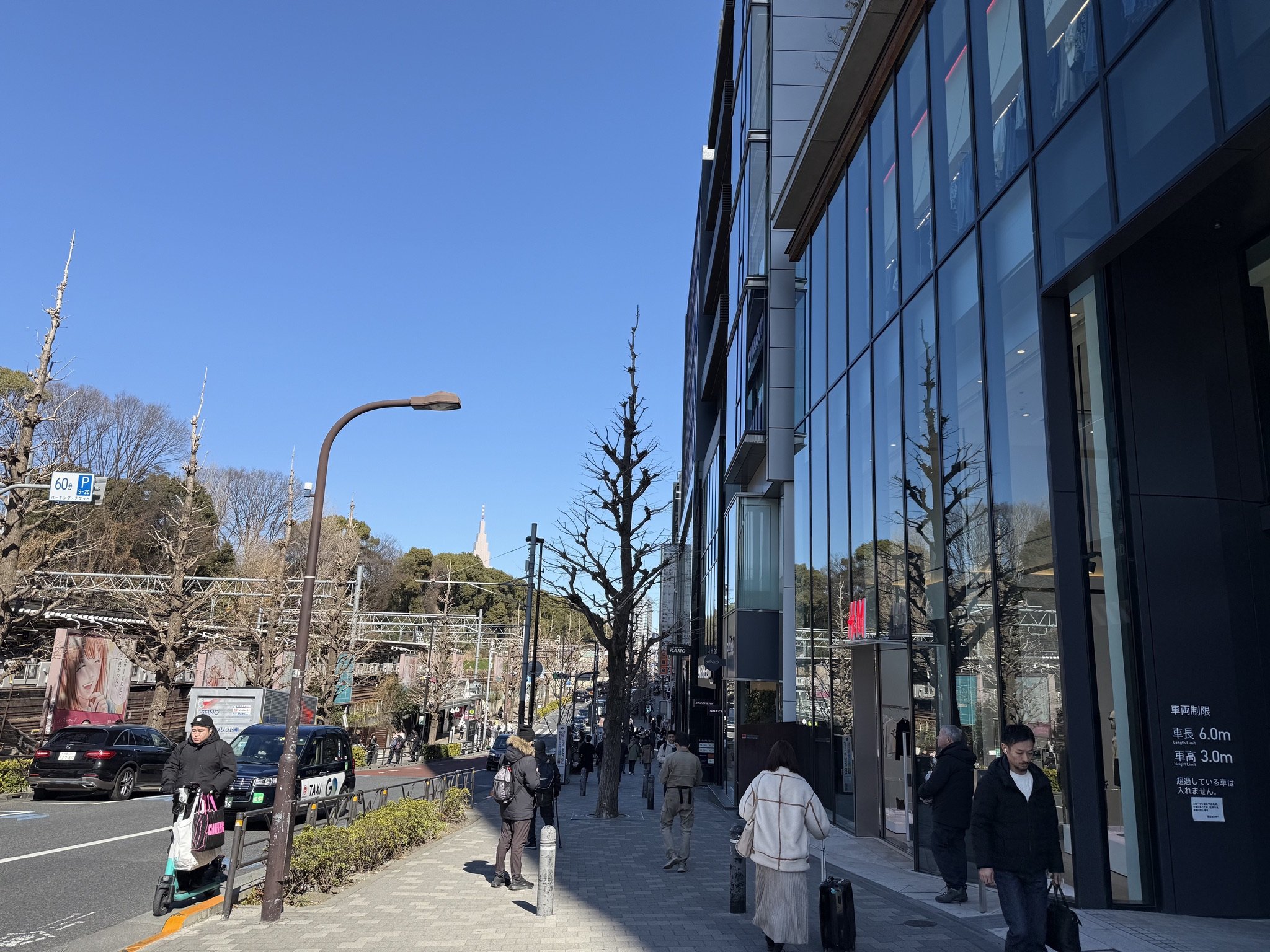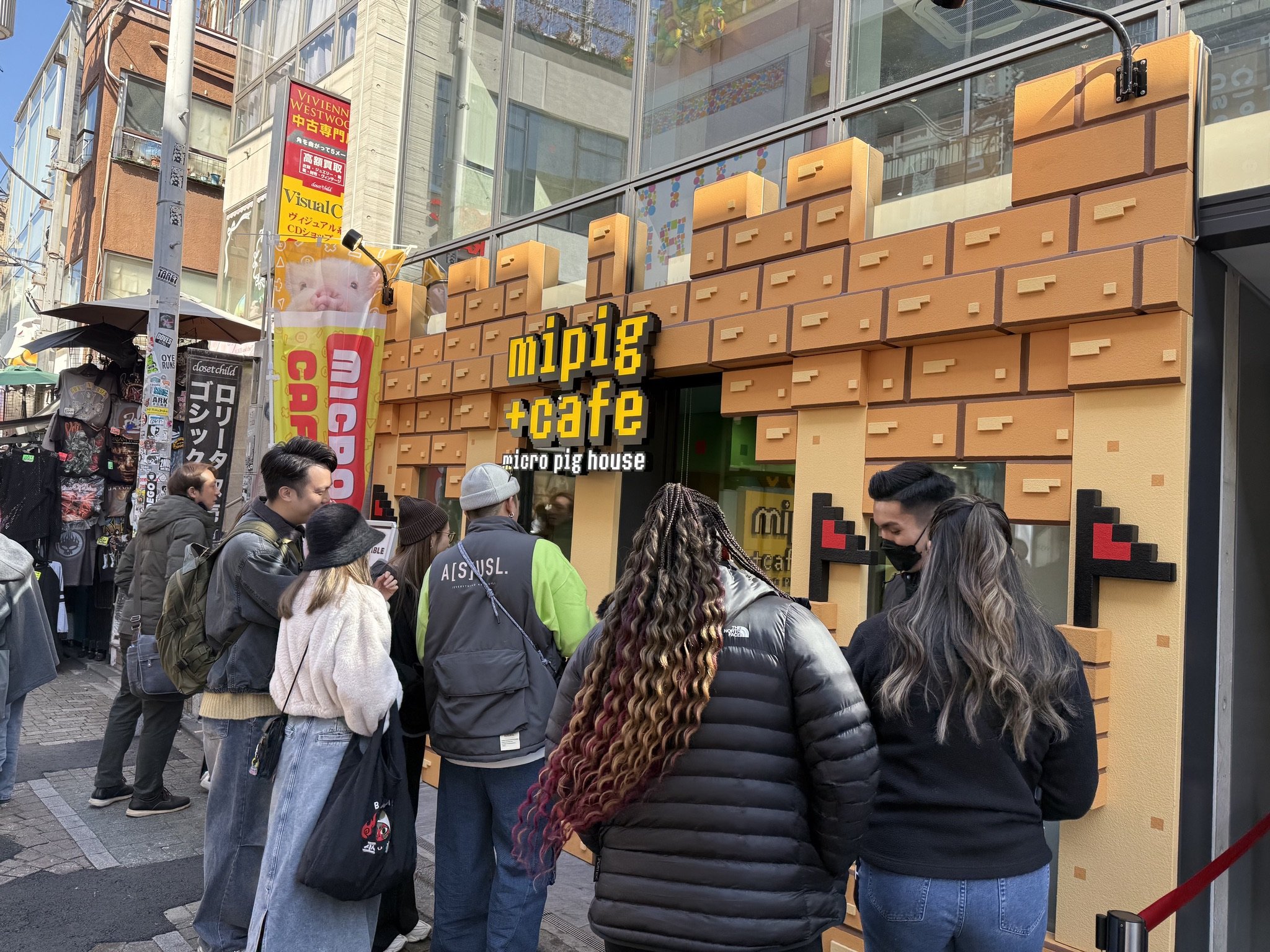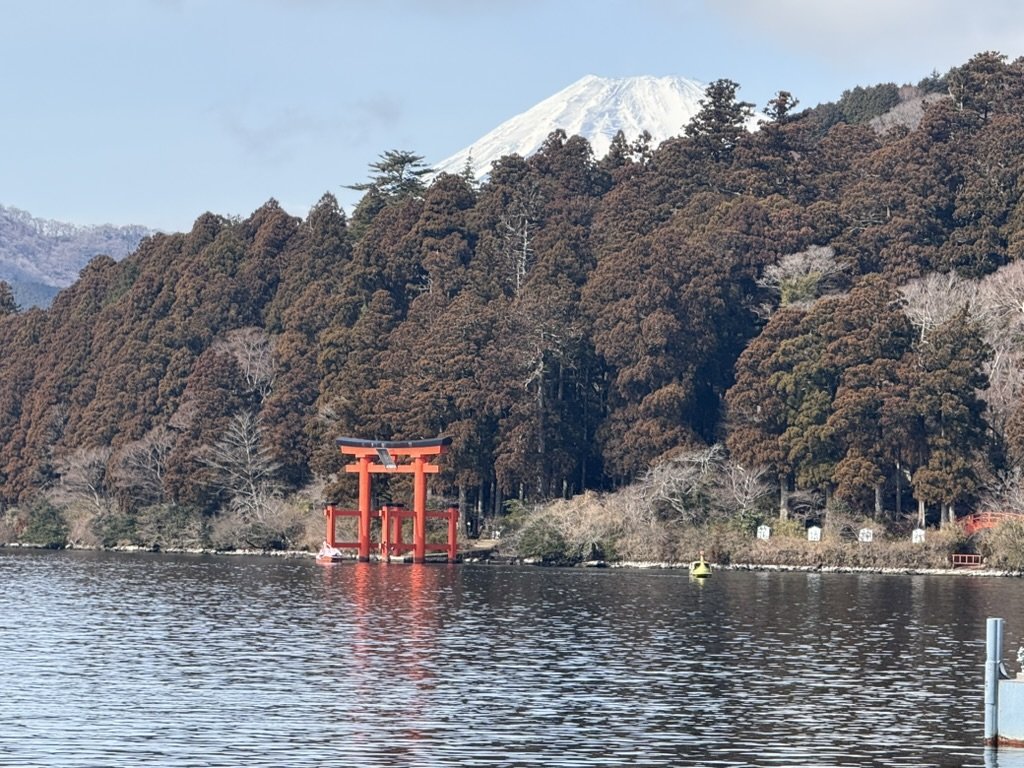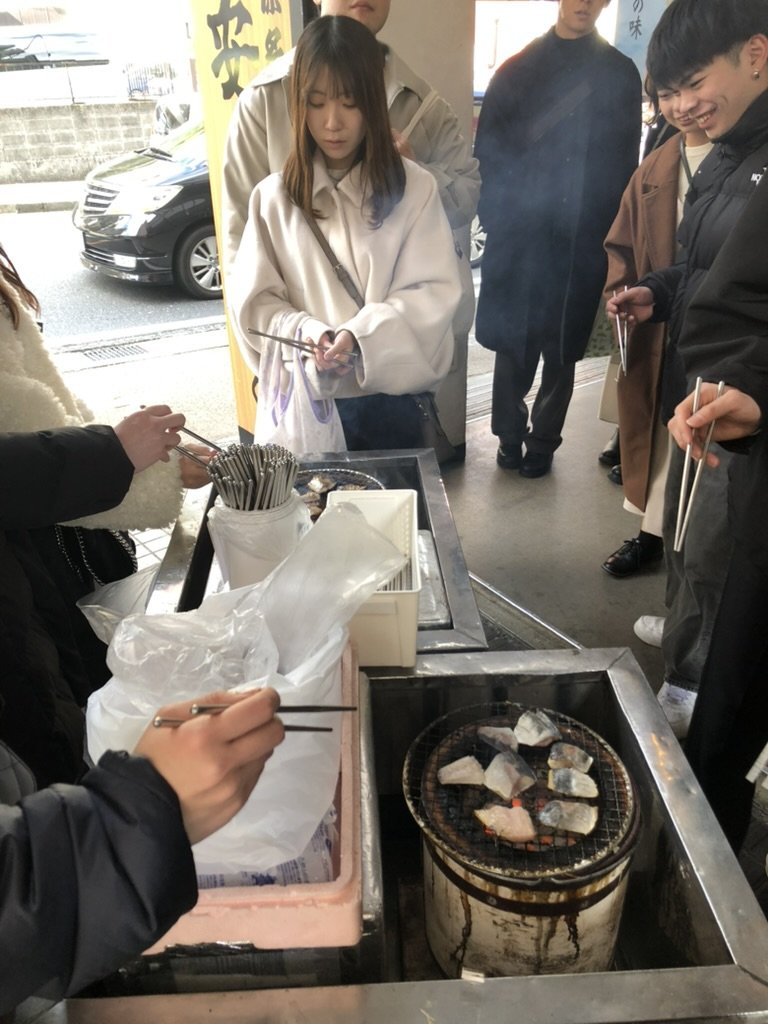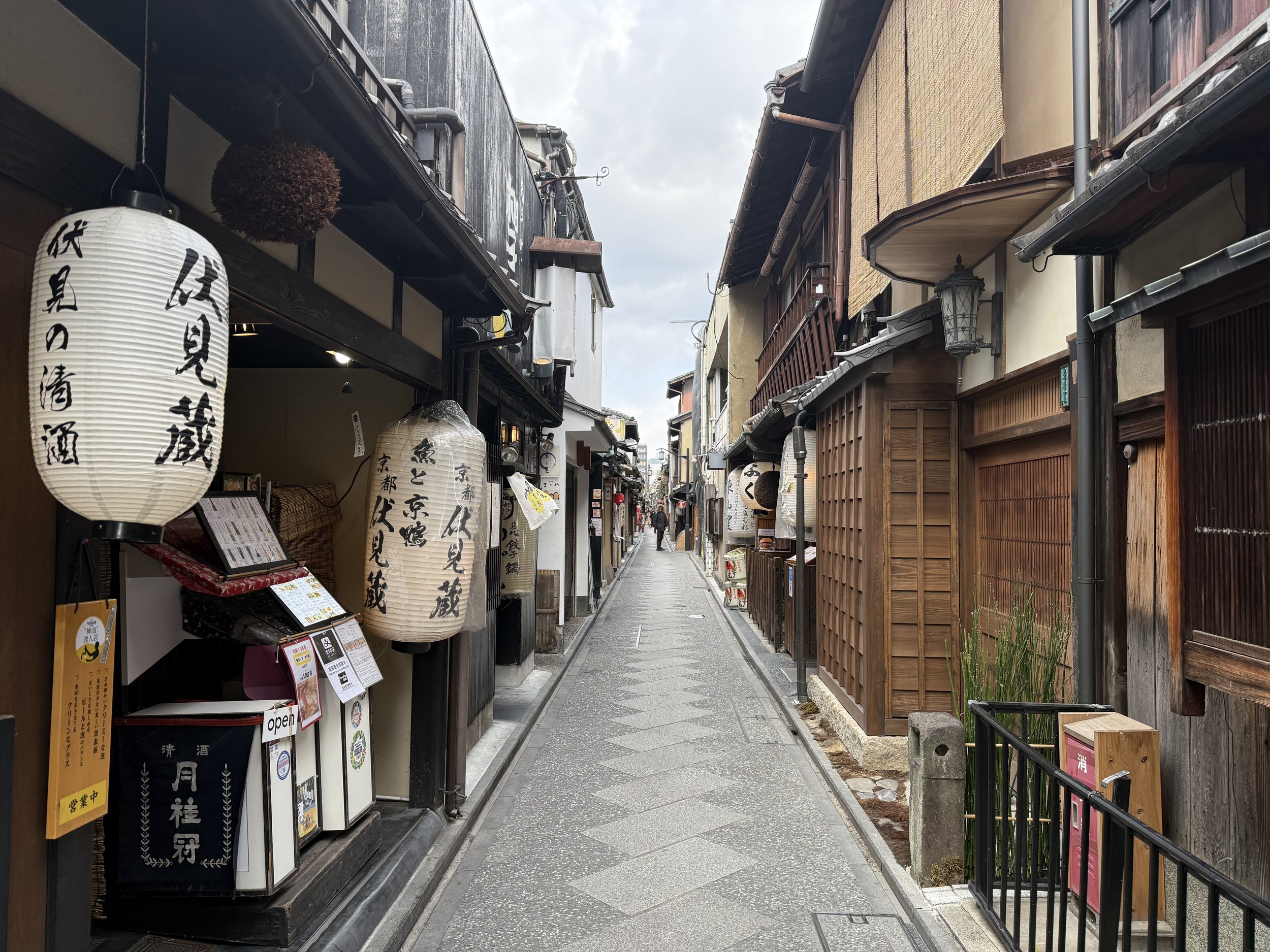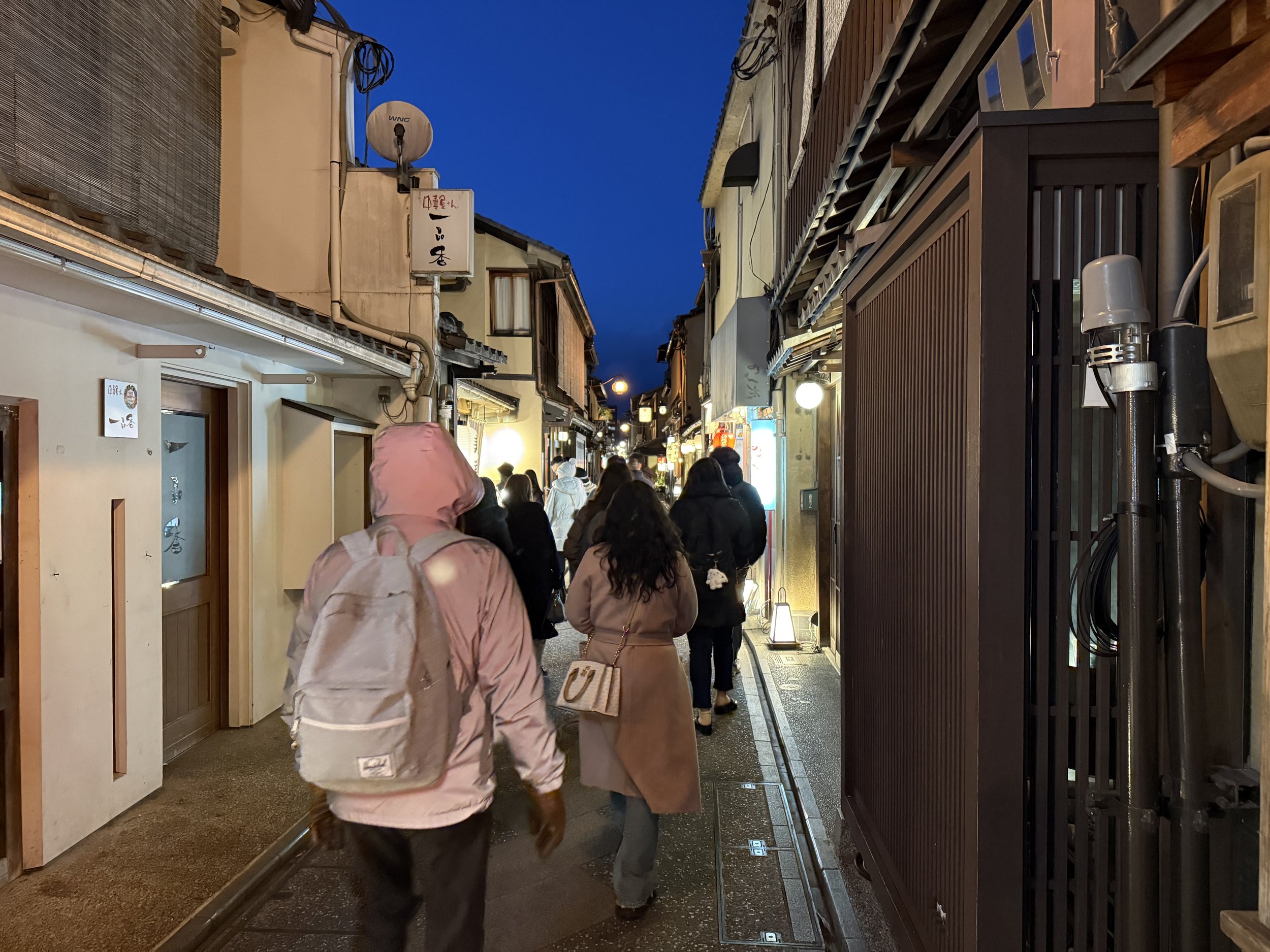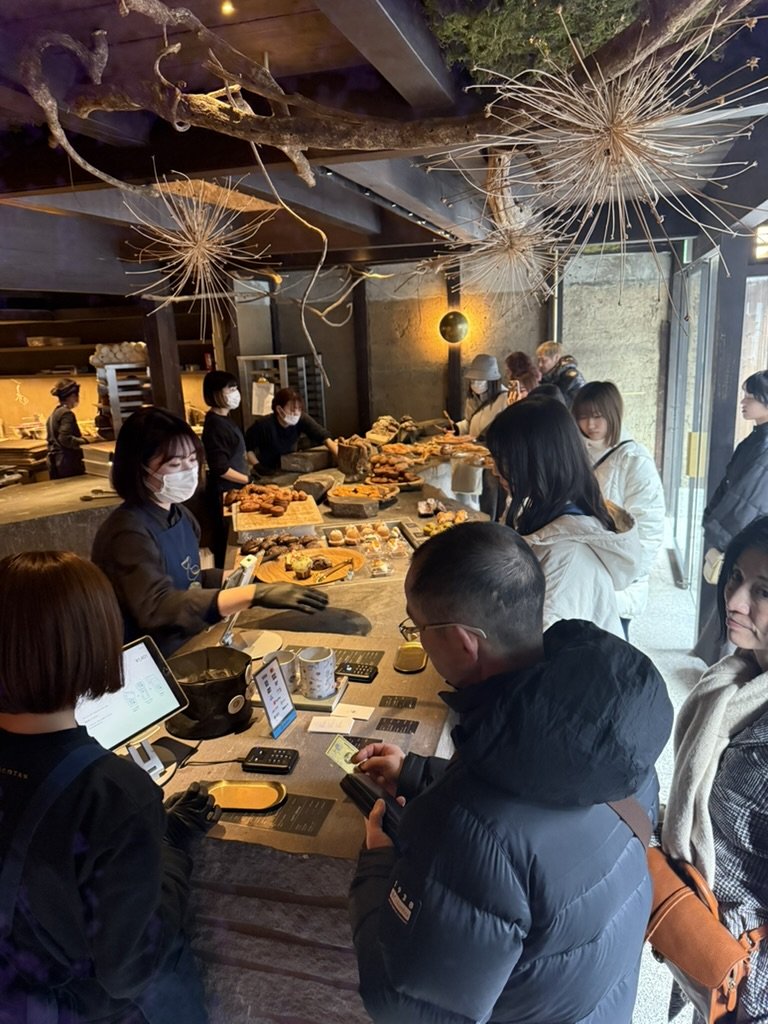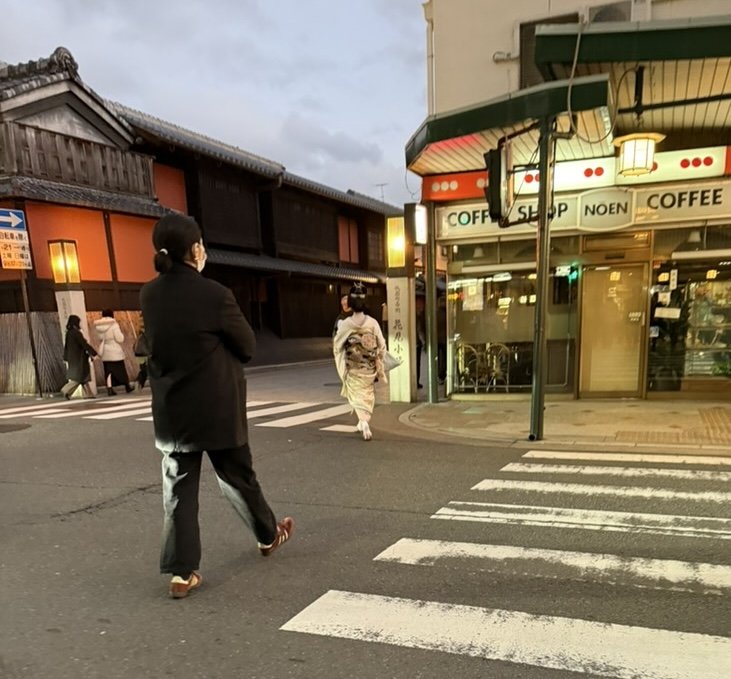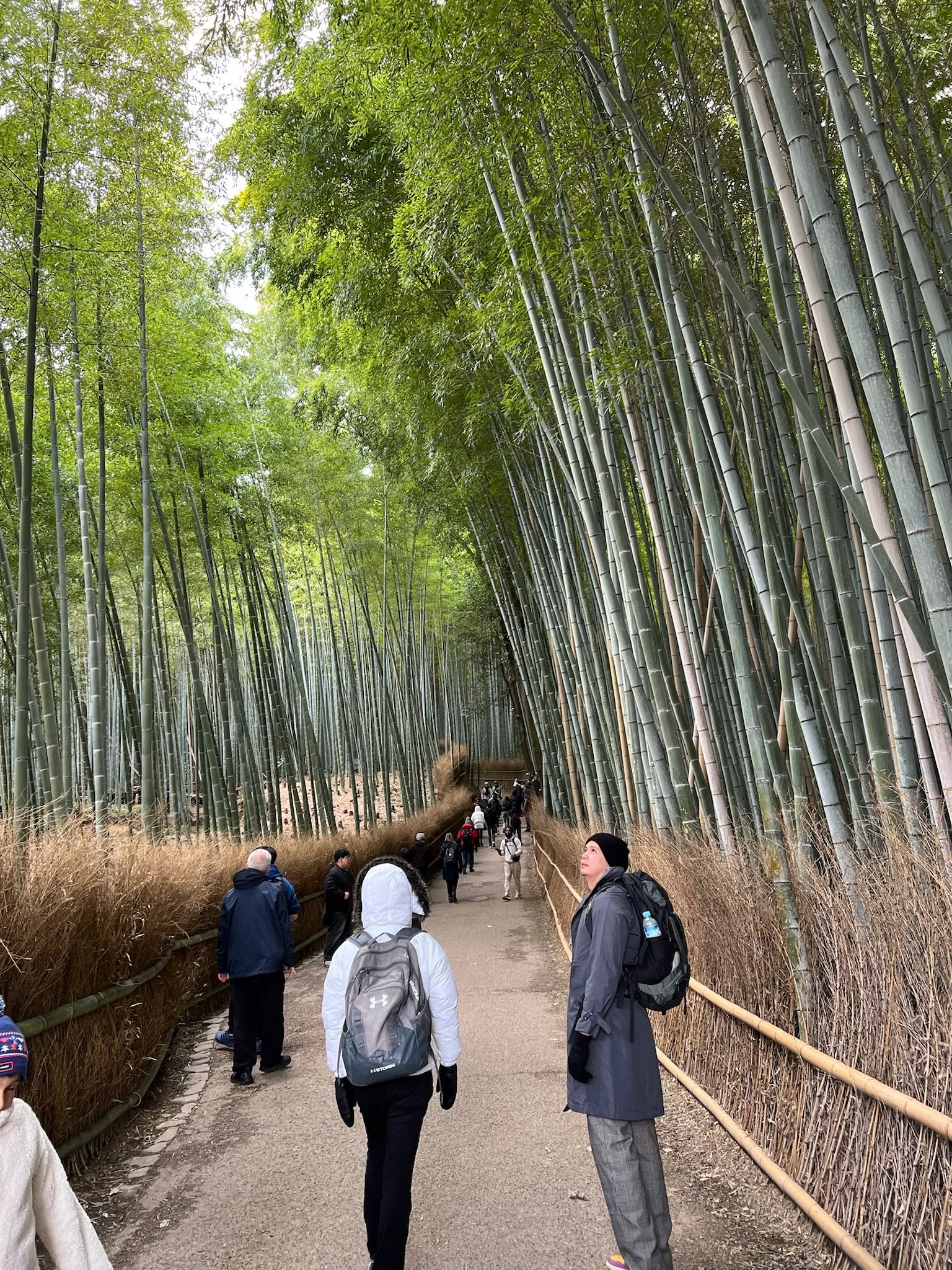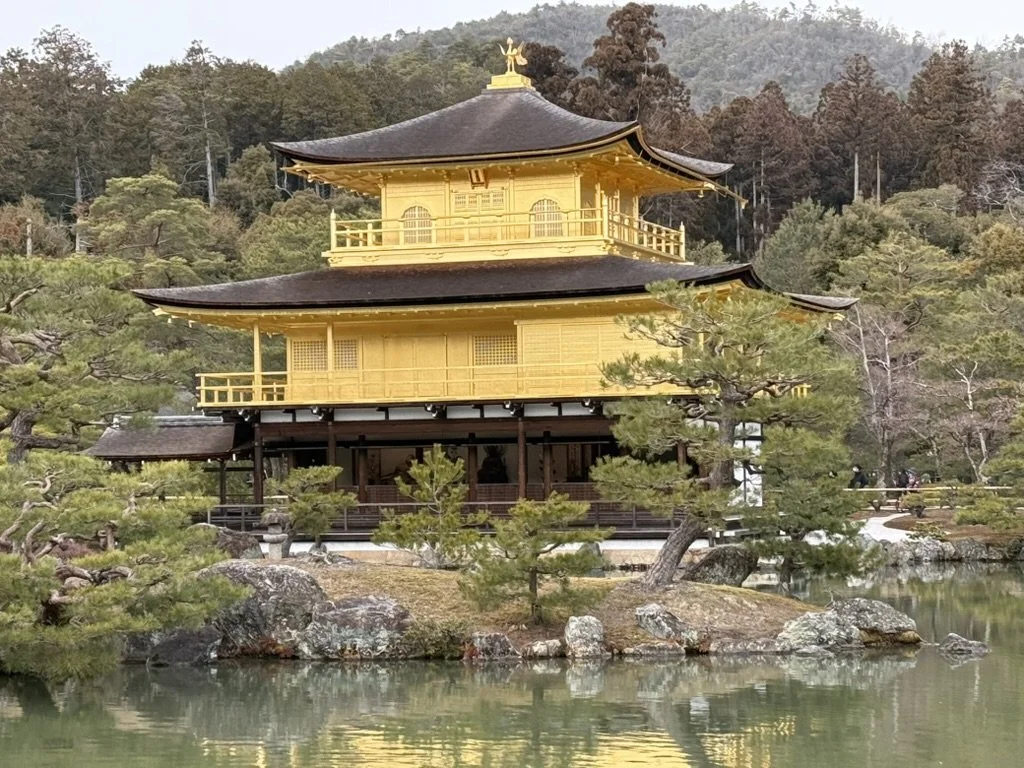Japan: Best itinerary for a first-time visit to Tokyo and Kyoto and more
by Irene Daria
Planning a trip to Japan can be overwhelming. So many choices about what to see and do! So many confusing temple and street names! So many blogs that tell you: See Pontocho Alley! See Ninenkaza! See Sannenzaka! but don’t tell you where those places are in relation to anything else.
Great news! We are about to make planning your trip to Japan easier. We will help you get oriented in Tokyo and Kyoto, and help you discover why a side trip to Hakone is worth it. You’ll get a lay of the land and itineraries that group popular sights together by geographic location to minimize the amount of time you need to spend traveling from spot to spot. You’ll know what the neighborhoods around the main sights are like so you can plan what else you’d like to do in the area. You’ll get walking tours and background info on the main attractions. Plus, we share links to other websites that provide great explanations of train and currency logistics or do deep dives into cool places to see and foods to eat. Here’s everything you need to know to make the most of your trip…
Tokyo
Getting oriented: Tokyo is a MASSIVE city that is divided into wards that are then subdivided into districts in the same way New York City is divided into five boroughs and then subdivided into various neighborhoods (think Brooklyn subdivided into Williamsburg, Prospect Heights, Bed Stuy, etc.) Once you are in Tokyo, you won’t need to know the names of the districts, but they are important to know when you are choosing your hotel or Airbnb location.
Of the main districts first-time visitors would be interested in, Sumida ward is the furthest east. That is where Tokyo Skytree is. Taito ward is just west of Sumida across the Sumida River. The district of Asakusa is in Taito ward and Asakusa is where one of the two temples you’ll want to see in Tokyo (Senso-ji) is located. Taito is also home to the lovely Ueno Park which, in turn, is home to the Tokyo Zoo, as well as the Tokyo National Museum and other cultural attractions. It is an elegant park whose buildings are impressive in the way that Museum Row on New York’s Fifth Avenue is impressive.
The other busier, more commercial and flashier districts you’ll probably be checking out as a first-timer are Shibuya and Shinjuku. Those are in western Tokyo. Other sights are north or south of these main districts and we will give you the most efficient itinerary for visiting them. The tourist areas in Tokyo are quite crowded, but the city also has lovely, peaceful neighborhoods where you can take a pretty riverside walk or relax at a lovely waterfront cafe or restaurant after a full day of sightseeing. (Think of it as going to the West Village after touring Times Square.)
Where to stay in Tokyo: I wanted to stay in Asakusa, but when I did an Airbnb search for that area all of the Airbnbs were in Sumida City, which is just across the river. Click here to see the one we chose and for more on Sumida City, photos of the area, and what you need to know to decide if Skytree is worth a visit if you are not staying near it.
If you are exploring other parts of Japan and returning to Tokyo for the night before your flight home, I recommend choosing a hotel over an Airbnb for that leg of your stay. Hotels will hold your bags for you after you check out so that you can explore more of Tokyo the day of your flight without having to schlep your luggage with you. (We saw many people rolling their wheeled luggage around the city, and now we know why. Most Airbnbs will not hold your luggage.) We stayed at The Tourist Hotel on our last night and loved it. We were able to get a room that comfortably fit three people, they held our bags, and the breakfast was delicious. Note: You have to reserve breakfast when you book your room. You can’t buy it on the day of.
This is the breakfast room at The Tourist Hotel. The breakfast was delicious. You can choose a western style breakfast of an egg and bacon sandwich or a Japanese breakfast of salmon, salad and miso soup.
Choosing your airline and flight time
We took ANA to Tokyo and United Airlines back home. ANA was WONDERFUL. So gracious and hospitable and the seats—even in economy—were so much more comfortable than United’s. The United Airlines flight was staffed by a crew that went through the motions and never smiled once. They all acted like they would rather be somewhere else. If you can choose ANA for your flight, definitely do so. The food was over-the-top better too. (The gracious hospitality we experienced on ANA carried over to the rest of our trip. Even in fast food restaurants, workers call out a warm welcome to you when you enter and many smaller, private restaurants will call out a thank you and goodbye when you leave.)
We took a 1 pm flight out of JFK airport and landed at around 5 pm the following day. I HIGHLY recommend that time of arrival (as opposed to taking a flight that gets you in early in the morning) because you will have time to stretch your legs and then fall into bed at around 9:30 pm, sleep like a baby, and wake up relatively refreshed. The other option gets you in at around 5 am, and you will be exhausted when you land and still have a whole day ahead of you.
Getting to your hotel or Airbnb from the airport
The trains in Japan are great, and you can certainly take one to your hotel or Airbnb. We took a taxi from Hanada Airport because it was quicker, and we wanted to have time to explore and didn’t want to deal with our luggage on the train. The train system is busy and there are A LOT of stairs and escalators. Uber exists in Tokyo and, through the Uber app, you can call either a taxi or an Uber car. The taxis are cheaper than the Uber cars and the taxis tend to be really nice, large black vans that comfortably seat 4 or 5 passengers with room for luggage. They feel quite luxurious and comfortable.
Tip: Language can be a huge issue in Japan. Make sure you have the address of where you are going to written out in Japanese so that you can show it to your driver or to someone at the train station should you need to ask for directions.
This was our Tokyo itinerary, including what we recommend and what we would do differently if we could do over again:
Day 1 (Arrival day):
Arrive and get settled in your accommodation in Asakusa/Sumida City.
Walk to Tokyo Skytree.
Explore Tokyo Sky Tree and the mall underneath it called Tokyo Solamachi.
If you are staying at an Airbnb, stock up on groceries at the wonderful supermarket called Life that is across the street from Tokyo Skytree.
Click here for more info on Sumida City and Tokyo Skytree. We would repeat this day exactly as we did it.
Day 2:
Visit Senso-ji Temple
If you are staying in western Sumida City, you will be able to walk to the temple and will cross a bridge that takes you over the Sumida River and near Sumida Park. The park is basically a swath of greenery that runs along the wide Sumida River. Nice, but nothing to go out of your way for. We enjoyed the walk to the temple and I noticed right away how bicycle-friendly Tokyo is. Traffic is minimal on the side streets and I don’t think we heard a car horn once the whole time we were in Tokyo. Click here for more details and a self-guided walking tour of Senso-ji. After you are done visiting the temple, exit through its garden and walk to Ueno Park. (It will take you 30 minutes, as long as the train ride takes.)
Stroll through Ueno Park
This is a very large, lovely park that has elegant-looking cultural institutions scattered throughout it. You’ll also find lots of greenery, flowers, museums, a zoo, and a great Starbucks with outdoor seating by a pretty fountain. You can use the restroom at the Tokyo National Museum (restrooms are to the right of the ticket booths) or at Starbucks. Click here for a map of the park, info on the temples, shrines, museums and zoo located in it, as well as the best place to see cherry blossoms there.
Take the train to Ginza
Ginza is a fancy shopping area, and it’s fun to check out the vast and beautiful food halls the department stores have in their basements.
The most impressive food hall is in the Mitsukoshi Ginza department store, see photo above. You’ll find many different vendors with beautifully displayed provisions, but the stars of the show here are definitely the desserts. One worth trying is strawberry fruit sando from a stand called Meruhenk. A fruit sando is a sandwich made from fruit, whipped cream and white bread. Fruit sandos are sold throughout Tokyo, and Meruhenk’s one is the best. (I have no idea how they make the strawberries taste so good, but they are amazing.) Meruhenk’s booth can be hard to find because the name is written in Japanese. Show someone the photo below, or look for the teddy bear logo you see on the sandwiches in the photo.
Tip: You can’t eat on the food hall floor, but bring your purchases up to the ninth floor where there are both indoor and outdoor sitting areas.
While you’re in Ginza, check out Itoya, possibly the most amazing stationery store in the world. You may also want to see the Uniqlo flagship store. The 12-story store is so popular that you are allowed to take only four items into the dressing room so that other people will not have to wait a long time. If you want to try on more than four items, you have to get on line again. The store has a cool exhibit showing how Uniqlo recycles plastic bottles into clothing. For a list of other major stores in Ginza, as well as suggestions on where to stay and eat, click here.
Eat Ramen at Ippudo
For lunch, we had planned to sample food from two places but found that the yakitori place we wanted to eat at was open only for dinner. (That is true of many restaurants in Japan so make sure you check a restaurant’s hours of operation before heading there!) Luckily, Ippudo was open for lunch. Ippudo is a popular world-wide chain for a reason. It is really good! We had the Akamaru Modern bowl, which was flavored with miso and garlic and loved it.
What we would skip if we had it all to do over again
Tsukiji Outer Market
There is a lot of hype and old information online about this market. Some travel blogs say a live tuna auction still happens here, but it does not. The live tuna auction now takes place in Toyosu Market, the world’s largest fish market. If you want to see that auction, here is a great blog post on about how to make the most of your visit to Toyosu: At Tsukiji, the auction is gone and so is the large indoor wholesale market. What is left basically consists of outdoor vendors selling food to tourists. You will primarily find raw fish or fish that is grilled and not seasoned in a particularly interesting way. The food was nothing special, and we felt it was not worth the visit. The food market in Kyoto is MUCH nicer and a definite must see. (More on that in our Kyoto post.)
But we all have our own personal lists of interests and must-sees and if Tsukiji is on your Japan bucket list, here is an excellent writeup on what to see and do at Tsukiji Outer Market. We finished up at Tsukiji much sooner than expected and had time to kill before our dinner in Ginza. We hopped in a cab to…
Odaiba
This artificial island in the middle of Tokyo Bay is a very popular date spot in Tokyo. It has a very nice waterfront park and a beach. There are lots of shopping malls, places to eat, and entertainment venues like Madame Tussauds and Legoland. There is even a replica of the Statue of Liberty. We took a nice walk along the river but wouldn’t recommend going out of your way to visit unless you are spending lots of time in Tokyo. Click here for more info.
The Imperial Palace
We decided not to visit since you are not allowed to see the palace itself (except on the Emperor’s birthday and one other day) and can only see the grounds. But if you are interested in going, this would be a good day to do it location-wise. Click here for info on the palace. Make sure to note the days it is open and the closing times.
Where I would have gone instead…
Shibuya
Although we had a pleasant afternoon, we could have seen many more interesting things on our first afternoon in Tokyo. If I had it all to do over again, I would have skipped Tsukiji Market and Odaiba and would have headed to Shibuya Crossing and Shinjuku instead. (See Day 3, below.) You will blitz through the sights in Shibuya very quickly. I mean, how long can it take to see the world’s busiest intersection, but you’ve got to see it, right? (You do. That intersection reveals a lot about life in Japan. More on that below.) Another excellent choice would have been…
Yanaka
Yanaka was my absolute favorite neighborhood in Tokyo. It is one of the few areas of Tokyo that escaped being bombed during World War ll. Because of that, it is full of lovely, historical charm and architecture.
A house in Yanaka
We got great wasabi flavored rice crackers here
A flower shop and cafe in Yanaka
We went to Yanaka on the last day of our 14-day trip but, logistically, the best time to see it is after Ueno Park. That’s because Yanaka is just a 15 minute walk north of the park. You will probably be hungry at that point in your day, and Yakana Shopping Street has the best street food in Tokyo. It was this blog post that made me decide to see Yanaka. I found that post on one of the last days of our trip and I am so happy I did. When planning this trip, the only write-up on Yanaka I had found focused on the town’s love of cats and it made it seem like the whole place was cat-themed. That cat write-up on Yanaka actually made me initially decide to skip it. I am so glad I didn’t! The residents do love cats, but that is just one small fact about that lovely area. Click here for a fantastic write-up on Yanaka that I found only after we visited but sure wish I had seen beforehand! It gives you a great walking tour to follow. If you are looking for a sit-down restaurant, I recommend Hagi Cafe. It is a charming space housed within a renovated small apartment building and shares the space with a few small shops. There are a few outdoor tables and the indoor space is charming. See here for more info.
Day 3
This is what we did on the third day of our trip and it was my favorite day in Tokyo. It would have been even better had we done Shibuya Crossing the day before and had more time in Nakamegaro but, as you know, you learn a lot about a place only by visiting and doing things not quite perfectly the first time.
You will visit:
Meiji Shrine. Set in a beautiful forest, yet just a few blocks away from Takeshita Street.
Takeshita Street. The fun and funky hipster fashion street.
Cat Street. A quiet, mostly pedestrian street lined with independent boutiques and cafes. Very pleasant to walk on even if you are not interested in shopping.
Omotesando Street. Often referred to as the Champs-Elysees of Tokyo.
Shibuya Crossing and all of its nearby attractions including the famous Hachiko dog statue and the most over-the-top Don Quixote store in all of Tokyo!
Nakamegaro. One of my two favorite neighborhoods in Tokyo. Chill and funky, it is Tokyo’s most expensive place to live.
Meiji Shrine
The shrine is located inside a beautiful 170-acre forest, yet is just a five-minute walk to famous and very busy Takeshita Street.
There are several entrances to the shrine. If you are taking a taxi there, make sure you are let off at the Harajuku Station. The main entrance to the shrine is directly across a pedestrian plaza from Harajuku Station. If you enter this way, and continue on the forested path you will see the famous saki and wine barrels. It is a beautiful walk. (The self-guided walking tour link, below the photo below, gives you more info on all of this.)
This is Harajuku train station, located across a pedestrian plaza in front of the main temple entrance.
Click here for a self-guided walking tour of Meiji Shrine and the approach to it. After you see the shrine, exit the same way you entered—through the shrine’s main gate next to Harajuku Station. Walk towards the Harajuku train station entrance (pictured above) cross the street, and turn left.
The 5-minute walk to Takeshita St is very pleasant. On the left side of the wide street, you’ll see railroad tracks stretching in front of the Meiji Shine forest. The right side is lined with stores like Uniqlo and H&M as well as unique places like Baby Tapi, a bobba store that is an OBSESSION among youngsters in Japan. Click here to see what makes it unique.
Takeshita Street
This pedestrian-only street used to be the place where Japan’s trendiest youth decked themselves out in extreme fashion. You’ll see some vestiges of that, but you’ll also find shops selling food and trinkets and can visit a few animal cafes where you can hold and snuggle with baby pigs or dogs.
The baby pigs in this cafe are VERY cute. You can sit on the floor inside and hold them, or you can watch people doing that through the window like we did. The little pigs were very at peace and a few were napping on the laps of the people holding them. This is a GREAT place to take little kids!
Takeshita Street street is only 1/5th of a mile long and it would take you less than 10 minutes to walk its entire length without stopping.
Cat Street
Cat Street is a very nice, mostly pedestrian-only street lined with independent boutiques and cafes and a few big-name stores like Patagonia and Coach. It begins near Takeshita Street.
Walk along Cat Street and then go…
Eat Ginza at Harajuku Gyoza Lou
We enjoyed the ginza (thin-skinned dumplings) here. Like most restaurants in Japan, this one is small and you can see the cooks make your food. Sitting at the counter gives you a front row seat and is fun.
This is the front of the dumpling place. Like most Tokyo side streets, this one is very quiet and pleasant.
The restaurant is popular and you may have to wait, but the line moves quickly. After lunch…
Head for Shibuya Crossing
I couldn’t decide whether to walk along Cat Street or Omotesando Street to Shibuya. I had read that Omotesando Street was initially built to serve as an elegant approach to Meiji Shrine. Today, it is a main shopping artery known as the Champs-Elysees of Tokyo. That sounded pretty impressive. But Cat Street sounded fun. Then I realized we could see both! Read on for how to get to Shibuya Crossing from Meiji Shrine and see the best of both worlds—Omotesando Street and Cat Street.
This is Omotesando Street. The greenery you see at the end of it is Meiji Shrine’s forest
To experience both Omotesando and Cat Streets, head back to the Meiji Shrine entrance you used earlier this morning. (It is a very short walk.) That is the very beginning of Omotesando Street.
Walk along Omotesando Street
Look for these key landmarks:
Tokyu Plaza Omotesandō Harajuku:
Don’t Miss: The mirrored kaleidoscope entrance! Take the escalator to the rooftop terrace for views of Omotesandō and Harajuku.
Omotesandō Hills:
Designed by Tadao Ando, this upscale shopping center blends modern architecture with natural design elements. The interior spiral walkway is worth seeing, even if you don’t shop.
Architecture Gems:
Marvel at stunning flagship buildings like Prada Aoyama (sleek glass exterior) and Dior Omotesandō(minimalist design).
Keep an eye out for the Ralph Lauren store. As you face the Ralph Lauren store, Cat Street is on the left side of the building and intersects with Omotesando Street there.
Walk across this pedestrian bridge to reach Cat Street on the other side of Omotesando.
This is Cat Street on the other side of Omotesando.
Cat Street eventually merges into the Shibuya area near Meiji-dori Avenue. At the end of Cat Street, you will see the fancy shopping mall below. Follow signs for Shibuya or Shibuya Scramble Square and keep an eye out for the towering skyscrapers..
The area will get busier and busier and, soon, you will see…
Shibuya Crossing
What fascinated me about the crossing was not how busy it was, but how ORDERLY it was! All the cars stopped at the same time and all the people crossed at the same time. Then all the people stopped at the same time and all the cars drove at the same time. In Manhattan, cars would have been trying to turn into the various pedestrian crossings as people were walking, people would have been jaywalking as the cars were driving, and there would have been food delivery people on bicycles going every which way. In New York, horns would have been blaring. At Shibuya Crossing, not a single horn blared. Yes, there were a lot of people crossing but it, honestly, was no big deal. At least not while you were in the middle of it. It’s a lot more impressive when you watch it from the windows of the neighboring Starbucks. It is the busiest Starbucks in the world because so many people go up there to see the busy crosswalks below.
Hachiko Statue
The statue commemorates a very loyal Akita dog named Hachiko. The dog was born in 1923 and was adopted by a professor at the University of Tokyo. Every day, Hachiko would walk with his owner to Shibuya Station and wait there for him to return from work. Sadly, in 1925, the professor died of a stroke and never came back. Hachiko continued to wait at the station every single day for nearly 10 years, hoping for his owner's return. Local commuters noticed his loyalty and started feeding and caring for him. His story of love and devotion spread across Japan.
In 1934 a bronze statue of Hachiko was erected at Shibuya Station, with Hachiko himself attending the unveiling. He passed away in 1935, and his remains were preserved at the National Science Museum in Tokyo.
If you want to take a good look at the statue, be prepared to wait in a very long line since SO MANY people wait on a VERY long line to take photos with Hachiko. Since people are constantly posing with the statue, you can’t just walk up to it without getting in someone’s picture!
This is just part of the line of people waiting to take a photo with Hachiko.
Today, the statue is one of Tokyo's most famous landmarks and Hachiko’s story is told worldwide, inspiring books and movies, including “Hachi: A Dog’s Tale” (2009) starring Richard Gere. I watched the movie after we returned home, and was surprised that it was set in Rhode Island and RIchard Gere portrayed an American music professor. The story was Americanized to give the movie more global appeal. I was disappointed that the movie wasn’t set in Japan and didn’t tell the story of the real professor. But, still, the movie is very moving and brings the phenomenal loyalty of that dog to life. Watching the movie before you travel to Japan will definitely augment your experience of seeing Hachiko! It may actually be too sad for young children though, so be advised. There is also a Japanese movie of the story called Hachikō Monogatari which I have not yet seen.
Location: The statue is located on the Shibuya train station side of Shibuya Crossing. It is in a plaza just outside Exit #8. That exit is also known as the Hachiko Exit.
Don Quixote
Don Quixote is the name of a chain of discount stores that is famous in Japan. Hugely successful, it prides itself on being chaotic and overstimulating. It has narrow aisles, blaring speakers, and garish lighting. Think of it as indoor version of Manhattan’s Canal Street on steroids.
The Don Quixote in Shibuya is especially crowded and hyper-stimulating. (Someone who visited it with me said, “This must be a CIA torture site” and fled for the exit.) The Shibuya branch may be worth seeing just for its over-the-topness but, if you’re serious about buying something, visit one in a less crowded, less touristy area. You’ll enjoy shopping there more and will find every product imaginable. We picked up matcha-flavored Kit Kats and discovered Meiji chocolate at Don Quixote. Meiji is to Japan what Hershey is to the U.S. It is really good, not very expensive chocolate.
Nakameguro
Often referred to as “Tokyo’s center of cool,” this is one of my two favorite neighborhoods in Tokyo. “Naka” means inside and Nakameguro is an area “inside” the larger ward of Meguro. The neighborhood has lots of beautifully designed cafes, restaurants, and boutiques, and is set along the picturesque Meguro River, which is lined with cherry trees on both sides and is especially popular during the cherry blossom season. The trees are beautiful to see during the day and also at night when they are lit up. Visit and you will see why Nekamaguro is one of the most desirable—and expensive—places to live in Tokyo. Put “Starbucks Reserve” into your GPS and make sure you walk alongside the river to get to it. On the way, pop into any shops, restaurants or cafes that interest you. Click here for a guide to the best things to see and do in Nakagemuro. You may also want to check out Daikanyama, another hip neighborhood bordering Nakameguro.
If you are like most people, Kyoto will be the next area you visit. On your way to Kyoto, make sure to spend one of two nights in…
Hakone
Hakone is on the way to Kyoto. It is part of Fuji-Hakone-Izu National Park and is a popular weekend destination for Tokyo residents who visit for the hot springs. If you are lucky and the sky is clear, you will see a beautiful view of nearby Mount Fuji from Hakone.
I had never heard of Hakone and was skeptical about visiting. But my son’s friend lives in Tokyo and said it was a must-see. Now that I have been there, I agree with him. There is no other place in the world like it. When you step off the train, you will discover a lively small town with lots of hotels and interesting food options. Head up the mountain and the experience is like a Disneyland for nature lovers, with various forms of transportation—cable car, tramway, boat, and bus—taking you on a loop of the most beautiful sights.
Hakone’s main street is fun to walk on with lots of small food shops and many of them give out free samples. This one offered free pieces of fish that you grill yourself.
To get to Hakone, we took the Romance Car from Tokyo. It was a really nice experience—significantly nicer than the high-speed bullet train. Click here for a great Hakone itinerary. It is a loop that takes you to all the main sights. We recommend doing the loop in a counter-clockwise direction, which is how most people do it. The most interesting sights would then be at the beginning of your tour. This blog post has a great map of the tour on Hakone.
Kyoto
My advice for a trip to Kyoto is expect to be initially surprised (and maybe even disappointed) and then to be delighted as you explore further. That is the experience many people have.
Let’s talk about disappointment first, since I definitely don’t want you to feel that. Kyoto is a wonderful city, but Gion and Pontocho Alley were COMPLETELY different from what I imagined and from what many blogs portray them to be. I had read that Gion was a place of geishas, and lantern-lit streets, and sunsets by the river. It is, but I imagined the river as romantic and lined with beautiful trees and greenery, and was beyond shocked to see how built-up it is. I was already in Kyoto when I first saw an online picture of the much-hyped riverfront restaurants lining one side of the equally much-hyped Pontocho Alley. When I saw what that strip of restaurants looked like, I actually gasped in horror.
This is the picture that made me gasp. Of course, there is NOTHING wrong with this scene, but it was SO different from what I expected that I was shocked.
When planning this trip, I had avoided looking at pictures of places in Japan because I wanted to see everything for the first time in person but I highly recommend looking at pictures I am sharing so that you can know what to expect and will be able to enjoy Kyoto to its fullest.
This is the Kamo River where everyone tells you to go and see the sunset. On the left are the backs of the restaurants that line one side of Ponchito Alley. In warm weather months, the restaurants put up temporary terraces for outdoor eating. It is pleasant but it is certainly not the romantic, riverfront, lantern-lit experience I was expecting.
Literally EVERY blog and website I read to prepare for this trip raved about the charm of Pontocho Alley. InsideKyoto, which is run by the guy who wrote the Lonely Planet book on Japan says Pontocho is “considered by many in Kyoto…to be the most beautiful street in the city.” He did follow this up by saying, “By day, it’s not much to look at,” but the romantic in me was already seeing visions of cherry blossoms and cobblestones. Below is what it actually looks like…
This is Ponchito Alley by day.
InsideKyoto then went on to write, “in the evening, Pontocho becomes a magical place – the sort of street you might have imagined before arriving in Asia.” Let me tell you right now—it is nothing like I imagined. Another website called it “Kyoto’s most enchanting alley.” That description is actually accurate because the other ALLEYS in Kyoto are not much to write home about. And I do mean ALLEYS. Many of Kyoto’s STREETS are lovely and full of undiscovered gems, but not the alleys.
This is Ponchito by night.
Now let me be clear—Pontocho is worth seeing. It is interesting. It is a place where geisha still entertain customers in exclusive, members-only teahouses. It is a frame of reference for a visit to Kyoto. But it is NOT enchanting. The same goes for Gion by day. At night, it is very special, especially Hanamikoji Street, which is the main street of Gion and a must-see for geisha spotting. When the lanterns cast a red glow and the buildings look mysterious, it is wonderful to walk along. But, below, is what that street looks like by day. Very interesting but very different from what I expected.
This is Hanamikoji, the main street of Gion.
I couldn’t help thinking about Paris Syndrome when I first saw Ponchito Alley and Gion by day. The Japanese have so idealized Paris that when some of them visit the City of Lights for the first time, their disappointment in what Paris is actually like—and how it does not live up to their expectations—results in physical symptoms like rapid heart rate, dizziness and nausea that have come to be referred to as Paris Syndrome.
To avoid Kyoto Syndrome, TEMPER YOUR EXPECTATIONS. When it comes to Ponchito (which is just across the river from Gion), expect to see a cramped alley that—if you were going by appearances alone—you would probably avoid if it was located in any other city. The alley is very narrow and lined with small, dark restaurants that are lit by lanterns and have menus you won’t be able to understand because they are all in Japanese. Many of them are private clubs that will not allow you to enter. And the views of the river these restaurants have from their back decks are nothing to write home about since the area is so commercial. .
As for the rest of Kyoto, the temples, shrines, and many other sights are indeed beautiful and there are many, MANY lovely streets and areas to explore. As with many experiences, the places you end up loving may not be the ones that you were expecting to love.
Getting oriented:
Central Kyoto is where most first-time visitors are based and where much of your sightseeing will take place. It is divided into two VERY distinct and VERY different areas:
Downtown has a very busy and wide main street (Shijo Dori) that is lined with expensive designer-brand stores and is often clogged with traffic. (Dori means Street in Japanese, so it’s really just Shijo Street) Downtown also has many narrow streets dotted with absolute gems of small, lovely shops, food stores, and cafes. Shijo Street runs east to west through Downtown, and Nishiki Market is north of that street. Shijo Street also leads you directly to Ponchito Alley and the Shijo Bridge. You can walk across the Kamo River on that bridge to…
Gion and Higashiyama. Gion is the preserved entertainment district where you will still find original tea houses and geishas walking to work. Higashiyama is another preserved district that is just east of Gion (walking distance). It is where the must-see Kiyomizudera temple is located, as well as the iconic shopping streets Ninenkaza and Sannenzaka.
Below is a great map from Japan-Guide.com to help orient you to many of the main sights you will be seeing. Trust me, you will want to refer to this excellent map when you are planning your trip, and when you are in Kyoto, because figuring out where things are can initially be very confusing.
Use Shijo Street as your anchor to both Downtown and Gion. Shijo Street is the greenish-yellow street just below Nishiki Market on the west side of the map, above. Follow the street east and it will bring you to Ponticho and then take you across the Kamo River (also referred to as the Kamogawa River) to Gion. Gion and Higashiyama are the two preserved historic districts you will want to explore on the eastern side of the river. (They are shaded brown on the map.) Shijo Street divides the geisha district of Gion into a northern and southern section and dead-ends at Yasaka Shrine. Kiyomizudera Temple (one of your must-sees) is at the south-eastern corner of Higashiyama, as are Ninenzaka and Sannenzaka Streets.
Note: Higashiyama is actually the name of the large district in which both Gion and the smaller historic district of Higashiyama are located. This can cause some confusion. Just know that when blogs mention the “Higashiyama area,” they are referring to the area in brown on the map above where Kiyomizudera Temple and Ninenzaka and Sannenzaka Streets are located.
Where to stay
Kyoto is very large so, no matter where you stay, you will be traveling to reach various locations. If you prefer staying in a modern area near lots of stores and restaurants, then choose to stay near Nishiki Market. (A must-see.) If you prefer a more historic or less built-up experience, then stay in Gion. Since both of these areas are in Central Kyoto, they are convenient for traveling to all of Kyoto’s sights.
Downtown Kyoto
We stayed downtown, at an AirBNB near Nishiki Market. Not because we wanted to be near stores—in fact, we had no idea how different Downtown is from Gion—but because it was the nicest Airbnb available in our price range at the time we booked. When we first arrived, we were sorely disappointed to see the apartment was located in an area with lots of tall, modern buildings and was on a dark narrow street that didn’t seem to be very nice. Boy were we wrong!
As we explored our neighborhood by day, we found it was a pleasure to walk around in and that almost every block was home to a beautifully designed shop, cafe, or restaurant. When we arrived, we did not yet know that the streets in Kyoto are almost all narrow so they seem very closed-in. But those narrow streets mean there is very little traffic, lots of bicycles and very little street noise—all plusses, as far as we were concerned.
A cafe exterior.
One example of the small, beautifully designed shops you will find in downtown Kyoto. This one is a combination flower shop and ice cream store.
The Amam Dacotan cafe is so popular that you need to line up early in the morning to get a number that will let you in HOURS later!
A dried fruit display at Nishiki Market. The market is lovely with many interesting vendors and lots of free samples. This was the best dried fruit I’ve ever had. It was dried, yet still moist and SO flavorful.
This is the exterior of the dried fruit place so that you can find it. In front, they sell roasted chestnuts. The dried fruit is in the back.
Gion
Gion is Kyoto’s historic entertainment district and is where geishas still live and work. Although it is an entertainment distrct, its atmosphere is austere and solemn, as if something very serious were happening there. The main sights to see in Gion are…
Hanamikoji Street
Stroll along this street at night for a very atmospheric sense of what Gion was like hundreds of years ago. It is lined with historic machiya, or wooden merchant homes, which have narrow facades and have been converted into restaurants. Tucked in between these machiya are also ochaya, or teahouses, which are harder to gain access to. The most famous teahouse is more than 300-year-old Ichiriki Chaya. Its imposing red walls have hosted samurai warriors and some of the world’s most powerful politicians. Your best bet for a geisha sighting is on this street at dusk when they are headed to work.
FYI: Geishas are called geiko in Kyoto. For info on how geiko entertain guests and the teahouses to look out for on Hanamikoji Street click here . For incredibly informative info on geishas in Kyoto, and all of Japan, click here.
Kennin-ji Temple
This is Kyoto’s oldest Zen temple and is at the southern end of Hanamikoji Street It was founded by the same monk who introduced green tea to Japan. (I actually didn’t know this temple was located here, so I never saw it but I definitely would have gone had known it was so close to everything.)
Gion Shinbashi or Shirakawa Street
This area is also referred to as Shirakawa Gion and the Shinbashi Dori area which can make things very confusing for first-time visitors. To clarify: Shinbashi Street is the northern-most street in Gion. Below it lies Shirakawa Street which locals call the prettiest street in Kyoto.
It is!
The bridge over the Shirakawa Canal in Gion Shimbashi. For more photos and a great writeup on Shirakawa Gion from a Kyoto-based website called plingthinks, click here. Photo credit: plingthinks.
Shirakawa Street borders the Shirakawa Canal and is lined with weeping willows and many machiya (traditional, old wooden houses) and ochiya. Ochiya means “tea house” in Japanese, but these are not cafes. They are exclusive clubs where geisha entertain regulars and where admission is severely restricted. The street is a site for many photo shoots and is home to many of Kyoto’s expensive Michelin-starred restaurants. It runs has a Y-shape, with a little red shrine situated at the intersection. This shrine, like Yasaka Shrine, was frequented by geishas living in that area. (Like Yasaka, it is a shrine where people pray for beauty and prosperity.)
To find the Gion Shirakawa area, start at Shijo Dori (our anchor street to this area), walk north on Hanamikoji Street for three blocks and turn left onto Shimbashi Dori. (Shimbashi Street.) This will bring you to Shirakawa. You can also access Gion Shirakawa by starting at the southern end of Ponchito Alley where it intersects with Shijo Street, crossing the bridge, turning left onto Kawabata Street and walking on the eastern side of Kawabata for about 100 meters. You will pass two commercial alleys where you will probably see trucks parked or loading and then reach a pretty, tree-lined pedestrian lane. Turn right and you will reach Gion Shimbashi.
Yasaka Shrine
The 7th-century shrine is a place where people pray for prosperity and beauty. The lantern-lit courtyard is lovely to see at night.
Maruyama Park
This is a very pretty park with many weeping cherry trees, koi ponds, and a very large weeping cherry tree known as the Gion Sakura that is the centerpiece of the park. That tree, and the rest of the park, is illuminated during cherry blossom season and is especially beautiful at that time of year.
Self-guided walking tour of Gion and Ponchoto Alley
For a walking tour of the best way to see the top sights in Gion and Ponchoto Alley click here.
Note: From Maruyama Park, the Higashiyama District (which you will read about next) is just a 20-minute walk. If you plan to see both districts on the same day, you may want to start at Kiyomizu-dera temple because you will then be walking downhill on Sannenzaka and Ninenzaka Streets and you will end up in the geisha districts of Gion in the evening. That would make for a lovely day and it is how I would structure a visit if I ever returned to Kyoto. But going the other way (starting in Gion and then heading to Kiyomizu-dera temple) has its benefits too. If you walk up the sloping Sannenzaka and Ninenzaka Streets you may end up enjoying them more. They are stepped streets, and as I walked downhill, I found myself concentrating more on where to step than on taking in the atmosphere. Plus, most people walk downhill and, since it is usually quite crowded, you will find yourself caught up in the flow of pedestrian traffic. Going the other way, you will be able to set your own pace better.
The Higashiyama Historic District
Here you will find…
Kiyomizu-dera temple
If you see only one temple in the Gion/Higashiyama area, make it this one. It is one of the most famous in all of Japan. It is one of Kyoto’s most celebrated temples, renowned for its stunning hillside location, iconic wooden stage, and panoramic views of the city. (Not to mention its proximity to Sannenzaka and Ninenzaka Streets!) As a UNESCO World Heritage Site, Kiyomizu-dera offers a rich blend of history, spirituality, and cultural significance. Click here for more info and for a sefl-guided walking tour. Make sure to check out Tainai-Meguri. It's a walk through a dark tunnel located beneath the temple’s Zuigu-do Hall. The tunnel is pitch black, and you walk holding on to a rope that marks the course for you. The experience symbolizes entering the womb of a female Bodhisattva and being reborn.
Sannenzaka and Ninenzaka Streets
After you exit the temple, you will be on shop-filled Matsubara-dori Street which will bring you to Sannenzaka Street. Honestly, the shops here were similar to all the other shops we saw in various tourist areas in Japan so the merchandise may not call out to you. But the atmosphere is unique. And keep your eye out for one of the coolest Starbucks you will ever see. It’s located inside a 100-year-old machiya and offers tatami mat seating in one of its upstairs rooms. There is no Starbucks sign on the outside, so it is easy to miss. After Sannenzaka Street flattens out, turn right onto Ninenzaka, another preserved street.
Bathroom tip: The Park Hyatt (ranked as one of the best hotels in the world) is at the end of Ninenzaka Street. It is a serene and elegant hotel and you can use the gorgeous restroom located in their restaurant.
Sights outside of Central Kyoto
Fushimi Inari Shrine
This is the most visited attraction in all of Kyoto and I have one thing to say about that:
I don’t get it.
Maybe it’s so popular because of its over-hyping on social media? Those long rows of red torii gates are ubiquitous on Instagram. Whatever the reason, people from all over the world—especially China—flock here in droves.
They come not to see the shrine itself, but to see the THOUSANDS of red torii gates that snake their way up the network of mountain trails behind the shrine. InsideKyoto (whose sensibility I have found I don’t agree with and which steered me wrong several times on this trip. For example, it called Kiyomizu-dera temple “a bustling riot of commerce and schlock” which made me almost choose to skip that wonderful temple) calls Fushimi Inari “the single most impressive sight” in Kyoto.
I wasn’t particularly impressed. I mean, you are basically walking through a very long tunnel of gates that have been donated by various businessmen or companies hoping for prosperity. (Inari is the god of rice and prosperity.) Not a very spiritual experience. And not a particularly pretty one, since the view of the trails is obscured by the gates and by all the other visitors whose main goal seems to be getting a good selfie of themselves with the gates. I’m glad I saw it but was sort of saddened instead of wowed by the experience. Again, this is a matter of lowering expectations. The JR train website, which has a GREAT writeup about torii gates, (Click here for that writeup) describes a visit perfectly. It says a visit offers, “a truly unique experience and excellent photo opportunities.”
But it IS a main tourist attraction and I’m glad I saw it. If you go, note that the left side each gate is inscribed with the name of the person or company who donated the gate and the right side tells you when it was donated.
After a while, we found the walk quite boring and headed elsewhere. I know several people who feel differently and really enjoyed their hike up the mountain (Mount Inari), even in over 100-degree weather! The hike takes about two to three hours in total. Here is a great walking tour of the hike from InsideKyoto which, clearly, is a big fan of it and has done a great job detailing the route and what you will see along it. And maybe you will love it and agree with InsideKyoto. After all, travel, like most experiences in life, is subjective, and there is no right or wrong. The hike is open 24 hours a day, seven days a week and there are no admission fees.
Aarashiyama Bamboo Grove
I’m sorry. I actually feel bad as I am typing this because the bamboo grove is another main attraction in Kyoto. But, as I am typing, I am also thinking—would you trust someone who thought EVEYRYTHING was amazing and lived up to its hype?
No?
I wouldn’t either.
And I’m beginning to think that hype is beginning to kill some of the joy in travel.
So, here is my honest opinion of the bamboo grove. Like Ponchoto Alley, there is nothing WRONG with it. It is a perfectly nice walk underneath two tall rows of planted bamboo trees. (They are not wild.) But over-hyped expectations led to another case of me thinking, “Am I missing something?
We dutifully walked the length of the grove and then had a much more enjoyable experience exploring the little town that has sprung up nearby because so many tourists come here to visit. The walk along the nearby river was also very nice.
In your online research you may come across recommendations to visit a coffee shop in town called %Arabica Arashiyama. It’s a tiny cafe with a lovely view, but be prepared to wait! The place is so busy that it has its own crossing guard to protect customers from traffic.
Kinkaku-ji Temple (Also known as the Golden Pavilion)
This is a beautiful temple located within beautiful grounds. Note that you are not allowed to go inside of it. Kinkaku-ji was constructed in the 1390s as a retirement villa for Shogun Ashikaga Yoshimitsu. It is a three-story building covered in gold leaf with a roof topped by a bronze phoenix. The first floor is built in the style of a Heian court noble, the second in the martial style of samurai, and the third in Zen Buddhist style. Apparently, the retired shogun lived in shameless luxury while the rest of the nation suffered from famine, earthquakes, and plague. If you come on a clear day (best is late afternoon), the Golden Pavilion shimmers against a blue sky, its reflection captured in the waters of a calm pond. This pavilion is not the original; in 1950, a disturbed student monk burned Kinkakuji to the ground. The temple was rebuilt in 1955 and in 1987 was re-covered in gold leaf that was five times thicker than the original coating. Be sure to take a walk through the surrounding park with its moss-covered grounds and teahouses. Click here for a walking tour of the grounds of Kinkaku-ji Temple.
After this, take a taxi to…
Philosopher’s Path
Philosopher’s Path was another surprise favorite. The taxi ride to here was pretty and the walk is lovely and is located within a genuine (non-touristy) neighborhood with some charming shops and restaurants alongside it. The path runs alongside a canal and is named for a Kyoto University philosophy professor who walked this route daily. We were there in February, but it must be especially beautiful when the cherry trees that line it are in bloom.
That brings us to the end of this post. Japan was a fascinating country to visit and I feel like we barely scratched its surface. I kept reading about the things to do and sights to see there for months after we came home. That’s the sign of a great trip, for me at least—it awakened my curiosity and, because of that, was definitely a trip that kept on giving.











